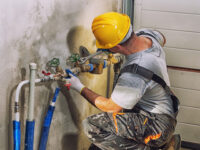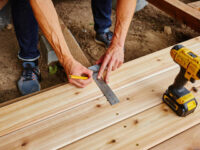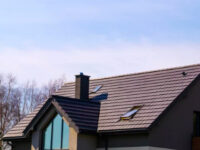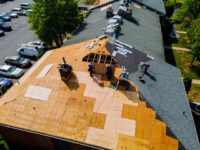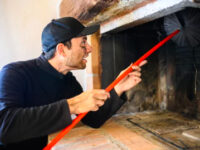How to Prevent Roof Repair Costs
Almost anything can damage a roof. It can start with a single missing shingle, which might not cause a leak immediately but may do so later as the surrounding shingles deteriorate.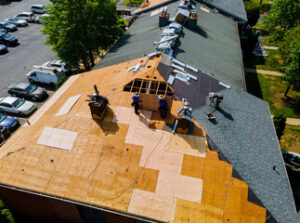
Also, a roof’s underlayment and flashing can deteriorate. And then there’s the gutters, which a roof leak can damage. Visit https://redstickroofing.com/lafayette to learn more.
While Floridians are accustomed to heavy rains, a well-maintained roof can prevent serious problems. In fact, homeowners can often avoid the cost of a roof replacement by performing routine maintenance and making minor repairs. The following tips can help protect your home from water damage caused by the rain:
Checking for a wet roof is a simple way to identify a leak. You can also look for mold or mildew on the ceiling, as well as dark areas in the attic. If you find any of these signs, a roof repair may be needed.
In addition to checking the condition of your roof, you should regularly inspect your windows and doors for cracks that could allow water into your home. You should also check your gutters for clogs that can block the flow of rainwater. Finally, you should waterproof your basement to reduce the risk of flooding during heavy rains.
Water damage from a sudden event is usually covered by your homeowners insurance policy. For example, if an ice dam suddenly forms and damages your roof, allowing rainwater to seep into your home and cause structural damage, you would be covered for the repair. However, if you neglected to maintain your roof and it eventually leaks into your home, leading to a wet attic floor and rotting wood, you probably wouldn’t be able to file a claim for the repair.
It’s important to check your home for any signs of a damaged roof before the heavy rains hit. This will help you get a better idea of whether or not a repair is sufficient or if you should replace your roof entirely. It’s also a good idea to know where your stopcock valve is located so you can quickly shut off the water supply if necessary. If you have any questions about your homeowner’s insurance or a possible roof repair, don’t hesitate to contact an experienced insurance professional.
Damaged Shingles
Storms can do a lot of damage to your roof, but shingles are particularly vulnerable to sudden and severe weather. Wind, hail, heavy rain, and sun exposure all adversely affect the structure and condition of each shingle. These factors can result in a host of issues that are difficult to predict or prevent.
Even a single missing shingle can lead to serious water leaks that wreak havoc inside your home. That’s why it is important to check for shingles that are loose or have been damaged during each and every rainstorm.
Missing shingles are fairly easy to spot, but the task of replacing them is not so simple. Taking on this job yourself can prove to be extremely time-consuming and challenging for inexperienced homeowners. It is best left to the professionals.
Once a shingle is damaged, it’s best to replace it immediately before the next rainstorm. This helps to prevent moisture from seeping into your home, which can cause extensive and costly damages.
If you have access to the shingle, start by removing the nail that held the damaged one. Then, pry up the nails of the shingle above it, and remove any that penetrated it as well. Next, slide the new shingle into place, ensuring that it is aligned correctly with the existing ones around it. Finally, re-nail the shingle through the nail strip to ensure it is firmly secured.
It is also a good idea to apply a waterproof sealant to the area where the shingle has been repaired. This helps to protect against future moisture damage and keep mold from forming. Keeping an eye out for shingles that have been damaged by the rain and making the necessary repairs is vital for protecting your home from potential damage, water leaks, and subsequent mold growth that can be very damaging to your interiors. If you notice any signs of a damaged or missing shingle, contact your local roofing experts as soon as possible to avoid expensive roof repair bills in the future. By doing so, you can protect your home for years to come.
Damaged Flashing
The roof is a vital part of the house and needs to be kept in top condition. Without a well-maintained roof, your home is exposed to severe water damage that can threaten the safety and security of everyone inside.
During severe weather, flashing can become damaged, and this can lead to leaks in the roof. In some cases, these leaks can cause serious structural issues in the house.
Flashing is a material that is used to help direct rain and other precipitation off the roof and into gutters. It is typically placed in areas where the roof slopes meet, or at other points of roof penetrations such as chimneys, dormers, vents, and skylights.
Roof flashing can be made of metal or plastic. Metal flashing is particularly susceptible to corrosion and can rust over time. If rusting occurs, it is important to contact a roofing contractor for repair services.
In addition to rust, flashing can also suffer from general wear and tear due to the weather. Strong winds can damage flashing and cause it to break or become dislodged from the roof. This type of damage can be difficult to spot since it is not always visible from ground level.
Flashing can also be subjected to severe water damage if the shingles surrounding it are damaged or missing. These problems are often caused by a lack of proper installation or by the buildup of snow or ice near the flashing. This problem can lead to a number of other problems including roof leaks, wood rot, and mold growth.
A visual inspection of the roof can be performed from the ground or by climbing up on the roof with the assistance of a professional roofer. However, it is important to note that it is dangerous to climb on a roof without the proper equipment and training. A professional roofer can inspect the flashing from a safe distance and can recommend the most appropriate course of action.
Leaking in the attic or basement may be a sign that the flashing is damaged. It is essential to have this damaged flashing repaired as soon as possible.
Damaged Gutters
Gutters play a crucial role in keeping rainwater away from your home’s foundation, siding, and roof. When they’re damaged, they can lead to flooding in basements and water damage to roofs and siding. Fortunately, most gutter problems are easy to fix with some basic DIY skills. With the right tools, you can fix clogs, cracks, holes, and leaky joints. You can also correct gutter slope issues, downspout draining problems, and sagging.
Gutter leaks often occur at the seams or in the end caps. To fix these issues, clean the gutter and then apply a waterproof sealant to the area of concern. The sealant should be applied at a consistent rate and allowed to dry for up to 24 hours. Then screw the end cap or seam back in place and fasten it with gutter screws. If the downspout is leaking, you may need to remove it and then add a new hole or joint.
Another common gutter problem occurs when the downspout isn’t directing water away from the house. This can be caused by a number of issues, including a downspout that’s too close to the house, an improper gutter slope, or simply a clog. To fix this issue, you can reposition the downspout by adding a downspout extension or using nylon rope to redirect the water flow.
Leaking gutters can also be caused by rust or cracks. If you have steel gutters, you’ll need to re-seal them with paint or a metal primer to prevent rust and corrosion. Gutters made of aluminum are less prone to rusting and are generally a better option when it comes to gutter repair.
Gutters are a great way to keep your roof and the rest of your home protected from the elements. If you have any of the common gutter problems listed above, it’s important to get them repaired as soon as possible to avoid serious water damage. With a little effort, you can save yourself money and protect your home from expensive repairs down the road. Just remember to always practice ladder safety and be careful when working on your roof.

